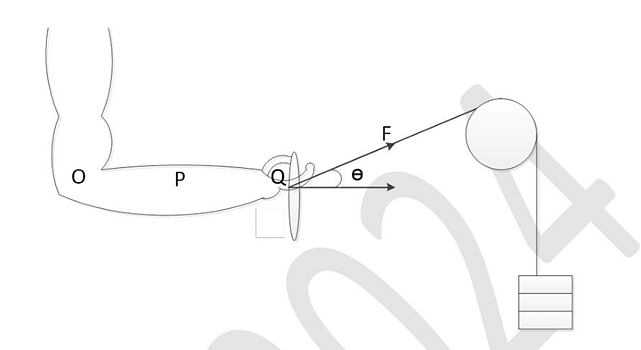Question:
Which of the following is the spurt muscle?
Which of the following is the spurt muscle?
Show Hint
\textbf{Biomechanics: Spurt and Shunt Muscles.} Understanding the functional classification of muscles based on their attachment points relative to the joint axis helps in analyzing joint movements and stability. Spurt muscles are movers, while shunt muscles are stabilizers.
Updated On: Apr 23, 2025
- \( \text{Brachioradialis} \)
- \( \text{Brachialis} \)
- \( \text{Pronator Teres} \)
- \( \text{Coracobrachialis} \)
Hide Solution
Verified By Collegedunia
The Correct Option is B
Solution and Explanation
Spurt and shunt muscles are classifications based on their attachment relative to the joint axis of movement and their primary function during joint action.
Spurt muscles have their origin far from the joint and their insertion close to the joint. Their primary role is to initiate movement and produce a large range of motion. They have a large rotary component of force.
Shunt muscles have their origin close to the joint and their insertion far from the joint. Their primary role is to stabilize the joint and resist dislocation. They have a large translatory (parallel to the bone) component of force.
Considering the muscles around the elbow joint:
Brachialis: Originates from the anterior surface of the humerus (relatively far from the elbow joint axis) and inserts onto the coronoid process of the ulna (close to the elbow joint axis). This arrangement makes it a spurt muscle, primarily responsible for flexing the elbow through a large range of motion.
Brachioradialis: Originates from the lateral supracondylar ridge of the humerus (further from the elbow joint axis than brachialis) and inserts onto the styloid process of the radius (further from the elbow joint axis than brachialis). It acts as both a spurt and a shunt muscle, contributing to flexion and also providing some stability.
Pronator Teres: Originates from the medial epicondyle of the humerus and the coronoid process of the ulna (close to the elbow joint axis) and inserts onto the lateral surface of the radius (further from the elbow joint axis). It primarily pronates the forearm and assists in elbow flexion; its shunt component is more significant for elbow joint stability during pronation.
Coracobrachialis: Originates from the coracoid process of the scapula (far from the elbow joint) and inserts onto the medial surface of the humerus (far from the elbow joint). It primarily flexes and adducts the shoulder joint and has no direct spurt or shunt action on the elbow.
Therefore, the brachialis is the clearest example of a spurt muscle among the given options for elbow flexion.
Was this answer helpful?
0
0
Top Questions on Muscle
- What are border movement and neutral zone while recording muscles?
- A person creates an apparatus as shown in the figure to exercise the extensor muscle of the hand. It is given that OP = 0.15 m, OQ = 0.35 m, θ = 30°, the weight of the lower arm = 20 N, the center of mass of the lower arm is at point P, the magnitude of the applied tensile force F = 50 N. If the extensor muscle is acting with a moment arm of 0.25 m, the muscle force required to hold the hand at the position shown in the figure is ______ N. Give your answer rounded off to the nearest integer.

- One of the following is not a part of light band of myofibril.
- Blocks of muscles found in cephalochordata are
- Given below are two statements:
Statement: Myofibrils are not attached to the plasma membrane.
Statement II: Myofibrils are attached to the plasma membrane at both ends of a muscle fibre.
In the light of the above statements, choose the correct answer from the options given below:
View More Questions
Questions Asked in AIAPGET exam
- Which herb is most commonly used to manage Madhumeha (Diabetes Mellitus) in Ayurveda?
- AIAPGET - 2025
- Dravyaguna Vighyan
- Prabhava describes which unique property of an Ayurvedic drug?
- AIAPGET - 2025
- Dravyaguna Vighyan
- Which drug is best suited for punctured wounds in Homeopathy?
- AIAPGET - 2025
- Materia Medica
- Which medium is used for Shodhana (purification) of Vatsanabha?
- AIAPGET - 2025
- Rasa Shastra
- Who is regarded as the Father of Unani Medicine?
- AIAPGET - 2025
- Kulliyat
View More Questions